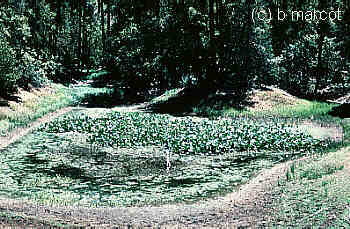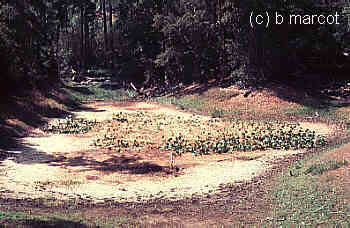


The larger emergent vegetation mat in the pond interior is yellow pond-lily (Nuphar polysepalum); the floating-leaf submergent is pondweed (Potamogeton natans); and the whitish substrate in the last photo is the alga Chara sp.
In the second photo, note the obvious zonation of Carex around the now-stranded shoreline. The emerging muddy shoreline hosts several vascular plant which emerge as the pond dries; these are useful indicators and are listed in the model PONDS.
Among the vertebrate predators I documented coming to the shrinking waters and stranded prey included mountain lion, common raven, American black bear, and even fisher.
Ephemeral ponds thus play several roles as wildlife habitat over the course of their "life cycle," including feeding, resting, and hiding sites for waterfowl and rails, watering and feeding holes for larger vertebrates including carnivores and other predators, and breeding sites for amphibians. So if a pond dries, don't dismiss it as loss of wildlife habitat!